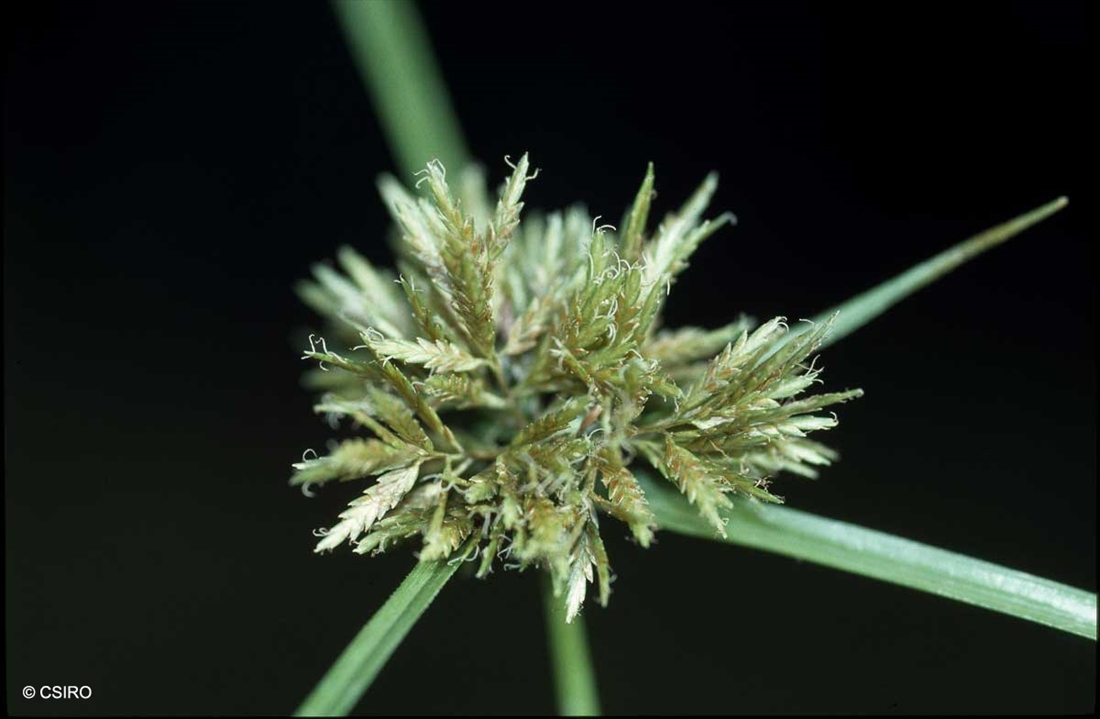Australian Tropical Rainforest Plants - Online edition
Cyperus polystachyos Rottb.
Rottboell, C.F. (1772) Desciptiones Plantarum Rariorum Iconibus Illustrandas, Programmate : 21. Type: K. Plunkenet. Tab. 416. Fig. 6.
Bunchy flatsedge
Tufted perennial. Stems up to 70 cm long, slightly bulbous at base, stolons absent
Leaf blades 4-5 mm wide, margins sparsely toothed, lamina apex triquetrous, leaf sheaths at base of stem short, many-nerved and reddish brown.
Inflorescence a terminal umbellate head or panicle of spikes. Inflorescence subtended by a whorl of 4 involucral bracts up to 200 mm long. Spikes 6-8 mm long consisting of 9-11 flowers arranged in a distichous fashion. Spikelets strongly compressed. Upper flowers in each spike female, lower flowers hermaphrodite. Glumes green, ca. 1.5 mm long with a distinct sharp keel and a vein on ether side. Anthers ca. 0.5 mm long. Ovary narrowly obovoid, ca. 0.8 x 0.2 mm. Style single. Stigmas 2.
Features not available.
Occurs in WA, NT, CYP, NEQ and widespread in Australia. Altitudinal range from near sea level to 1020 m. Grows in and along creeks and rivers in rainforest, Melaleuca forest, vine thickets, Eucalypt forest and swampy places in various types of woodland and grassland even in salty mud of the sea-shore. Widespread in the warmer parts of the world.







